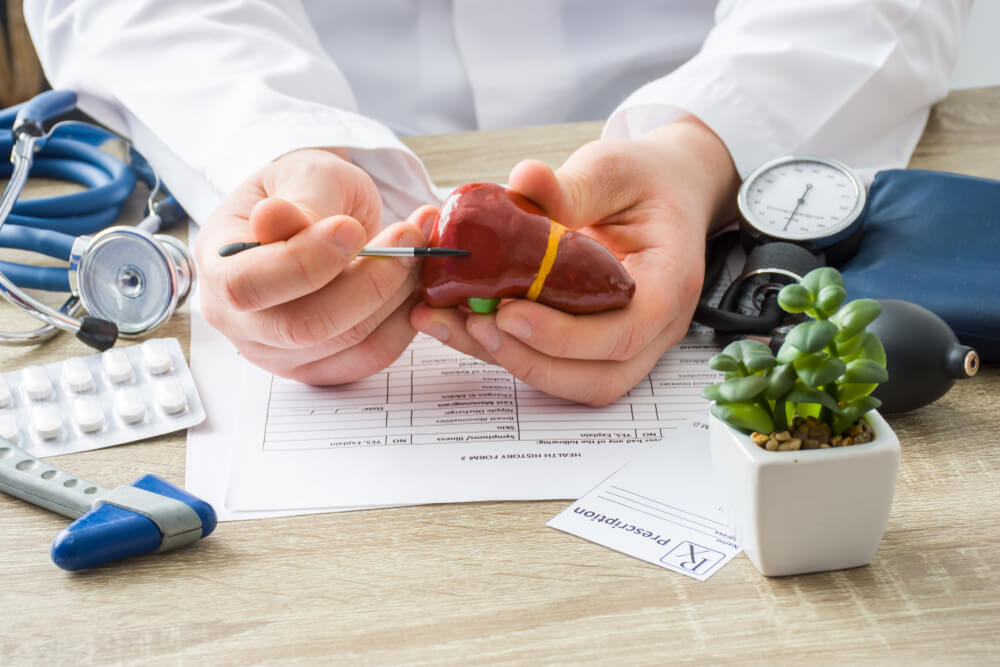Liver or hepatic cancer is a severe disease that may be divided into two different subtypes: primary and secondary liver cancer. The first starts in the liver itself, while secondary hepatic cancer spreads to the organ from other body parts.
As with most malignancies, liver cancer surgery and other treatment methods are the most successful if providers discover the tumor early. Fortunately, in the case of hepatic cancer, healthcare providers have a better understanding of the risks of the malignancy. They may identify increased risks earlier and, as such, may be able to treat primary liver cancer in its earliest stages.
In this article, Dr. Omar Rashid and his team of experts bring you comprehensive info on the subject of hepatic cancer, liver cancer causes, nonalcoholic fatty liver disease, and possible treatment options.
More About Liver Cancer
Hepatic cancer can be defined as a rare disease affecting only 1% of women and men in the US during their lifetime.
Typically, experts differentiate three different types of primary hepatic cancer and these are the following:
- HCC or hepatocellular carcinoma: This primarily affects the cells of the liver (hepatocytes). HCC is the most common form of hepatic cancer, responsible for almost all cases.
- Angiosarcoma: This is a rare type of liver cancer, responsible for around 1% of all primary liver malignancies. These cell mutations begin in the liver’s blood cell lining. On that end, angiosarcoma may affect other organs as well.
- IHC or intrahepatic cancer: Cancer grows in the liver’s bile ducts, and experts consider it a form of cholangiocarcinoma.
Typically, IHC and HCC affect males more, and men most often get a positive diagnosis between the ages of 55 and 64.
Causes and Symptoms of Hepatic Cancer

Liver cancer typically develops when the hepatocytes or the liver cells encounter a DNA mutation that alters their function. The genes in the cells control how hepatocytes grow, divide, and die. In the case of a DNA mutation, the cells receive new instructions.
For instance, DNA changes in HCC turn off tumor suppressor functions, eventually turning healthy liver cells cancerous.
When exploring causes, some experts state that long-term inflammation in the bile ducts can increase the likelihood of developing IHC, as it may trigger DNA changes in the liver cells.
On that end, experts also believe that nonalcoholic fatty liver disease may create an inflammatory environment. Similar mutations may occur, leading to malignancies.
For the most part, there are no evident liver cancer symptoms in the earliest stages of the disease. Also, HCC and IHC generally share similar symptoms:
- Fatigue
- Dark-colored urine
- A small lump just below the rib cage
- Pain in the abdomen’s right side or near the right shoulder
- Nausea
- Loss of appetite
- Unexplained weight loss
Unfortunately, it’s complicated to pinpoint the early warning signs of hepatic cancer. If you know that you are at risk of developing the disease, talk to your provider, who can monitor your liver, potentially detecting the problem at its earliest stage.
Liver Cancer Risk Factors
As mentioned above, medical experts have a more thorough understanding of what may lead to the formation of tumors in the river. It’s important to remember not everyone at risk will develop the disease, but knowing what might trigger the malignancy may help people make the necessary lifestyle changes.
As such, the most common risk factors are the following:
- HBV or Hepatitis B virus infection: This can be transmitted via semen, body fluids, or blood from mother to child during delivery, needle sharing, and sexual contact. It causes inflammation that may lead to cancer.
- HCV or Hepatitis C virus infection: Usually transmitted in the blood, mainly by sharing needles and, on rare occasions, organ transplants or blood transfusions.
- Cirrhosis: This is a disease in which scar tissue replaces the liver’s healthy tissue. Usually, chronic hepatitic infections and alcoholism are the leading causes of cirrhosis. As a matter of fact, cirrhosis may also be fatal if the liver fails.
- Heavy drinking: Heavy alcohol use may cause cirrhosis. Those who drink and have cirrhosis are approximately ten times more likely to develop liver tumors than those who only drink heavily.
- NASH or nonalcoholic steatohepatitis: This is the most aggressive type of nonalcoholic fatty liver disease.
- Aflatoxin B1: Eating foods that contain this compound (a fungal poison often found in nuts and corn) may also increase the risks of liver cancer
- Smoking cigarettes: Tobacco use has also been linked to hepatic cancer. The more and longer people smoke, the bigger the likelihood of developing the problem.
- Other medical conditions may also increase the associated risks, such as Wilkson disease, glycogen storage disease, alpha-1 antitrypsin deficiency, etc.
Diagnosing Liver Cancer
If your provider suspects the presence of a tumor or observes some of the most prevalent symptoms during the initial evaluation, they may recommend undergoing further testing to establish a precise diagnosis.
These tests may include the following:
- Blood tests to check liver function, liver enzymes, and proteins
- Magnetic resonance imaging (MRI)
- Sonogpgraphy (ultrasound)
- CT Scan
- Biopsy
- Angiogram
- ERCP or endoscopic retrograde cholangiopancreatography
- PTC or percutaneous transhepatic cholangiography
After establishing a diagnosis, providers will most likely stage cancer using the Barcelona Clinic Liver Cancer system or BCLC.
- Stage 0/Stage I/Very Early Stage: There is a single, small tumor in the liver with normal bilirubin levels showing in blood tests.
- Stage A/Stage II/Early Stage: A single tumor is slightly larger, or there are several smaller tumors. At this point, the blood vessels may also be affected.
- Stage B/Stage III/Intermediate Stage: One large or several large tumors are present, and the malignancy has spread to another organ, lymph nodes, and/or blood vessels.
- Stage C/Stage IV/Advanced Stage: Cancer has spread to the bones and lungs, as well as the lymph nodes.
Treatment

There are several common treatment options available for treating both HCC and IHC. For instance, in some cases, surgery will be enough to remove the problematic part of the liver. In other cases, liver-directed treatments such as hepatitic arterial ablation and embolization are needed. In these cases, providers may recommend liver transplantation.
Also, in more advanced cases, chemotherapy, radiation therapy, targeted therapy, or immunotherapy may be used to eliminate cancer cells.
Focusing on Prevention
While there’s no surefire way to prevent the malignancy from developing, people can do a few things to lower their chances of getting the disease. Cutting back on alcohol and tobacco makes for a good starting point. Maintaining a healthy weight is another healthy practice. Getting a hepatitis B vaccine is also a good idea, along with avoiding hepatitis C. Lastly, you can always consider liver cancer screenings.
On that note, feel free to reach out to Dr. Omar Rashid for any further questions or concerns.


